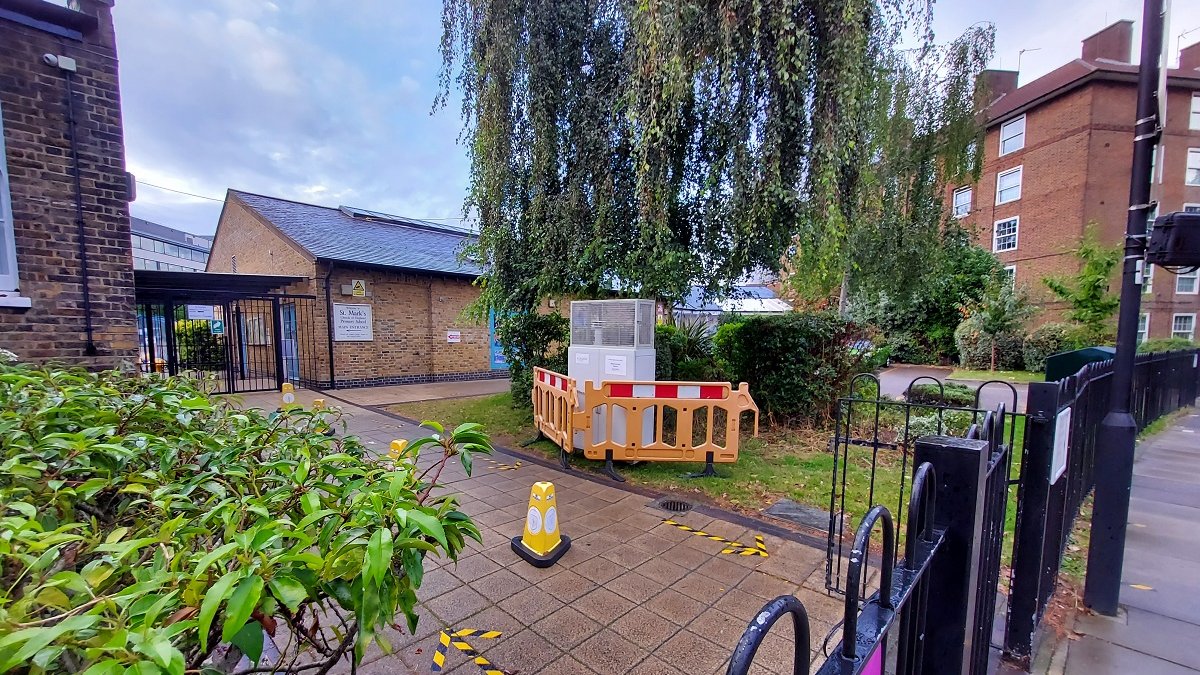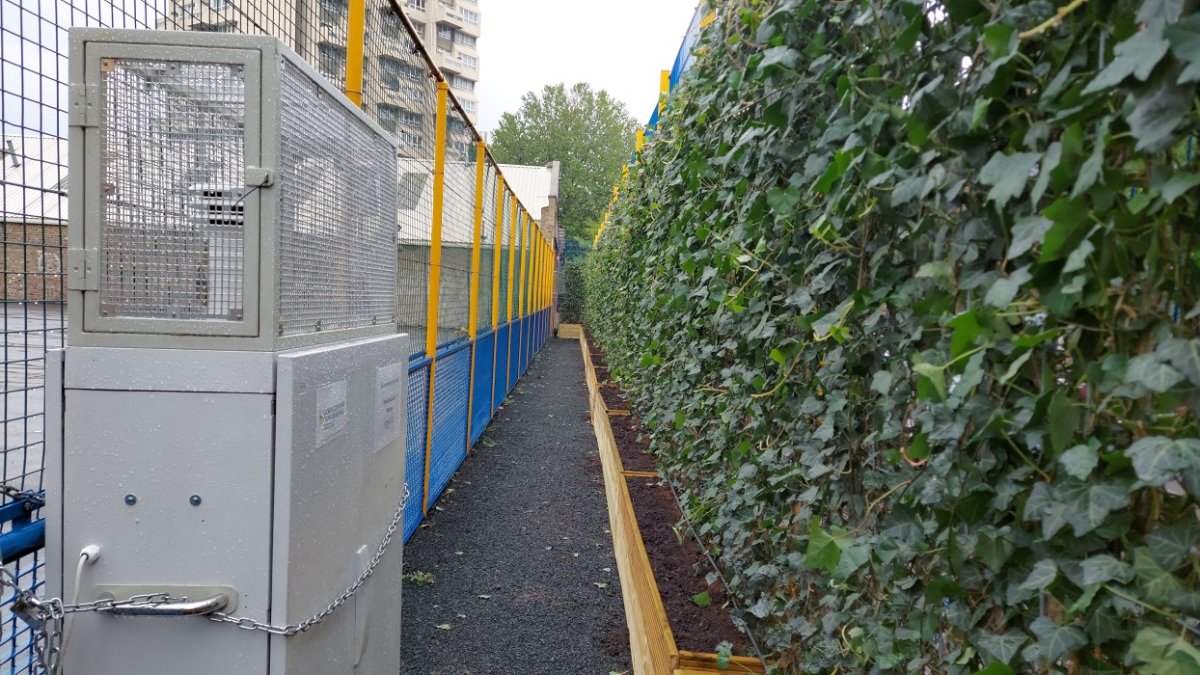GLL assesses air pollution interventions in Lambeth schools
The Guildford Living Lab (GLL) team within Surrey’s Global Centre for Clean Air Research (GCARE) has assessed the success of different methods of improving air quality at three schools in Lambeth, south London.

The Guildford Living Lab team measured air quality at each school to identify the impact of interventions.
The study was jointly delivered by Global Action Plan (GAP), Arup and GCARE as part of the Lambeth Schools Air Quality Programme funded by Impact on Urban Health. Surrey led the air quality measurements to identify the impact of interventions, while Arup provided designs and technical advice on the implementation of physical interventions, and GAP led on the behavioural interventions and schools’ engagement, as well as the overall programme management.
The team worked closely with Henry Fawcett, St Andrew’s and St Mark’s Primary Schools in Lambeth between October 2020 and January 2022. Having conducted preliminary measurements in a pre-assessment phase – which identified the relative impact of various factors on air quality in the schools – they implemented a combination of teaching, behavioural change and technology solutions.
The implementations included car free days, classroom ventilation, a green screen to improve air quality, and strategies to promote active travel and tackle idling – including a student-led ‘Idling is bad, definitely not rad!’ campaign.

In addition to providing vital data on the effectiveness of different interventions, the campaign spread important messages about air pollution and its health impacts to school students, parents and teachers. In total the programme reached over 700 children and – through a newsletter promoting the activity – around 1,500 members of the school communities.
The results of GLL’s assessment of the specific impact of the interventions on air quality are being assimilated and will be published in the near future. This knowledge will add to GCARE’s existing guidance for schools, Mitigating Exposure to Traffic Pollution In and Around Schools. These recommendations have been published in numerous languages and are used all over the world.
Professor Prashant Kumar, founding Director of GCARE, says: “We are excited to have designed and implemented the evaluation and monitoring for this project which has expanded the scope of GAP’s Clean Air for Schools Framework. Children are one of the groups most affected by air pollution, so creating a more rigorous and data-backed understanding of how to best protect them and safeguard their health both now and in the future is key.”
Hannah Battram, Senior Manager, Clean Air for Children at GAP, says: “It was great to work with such a multi-disciplinary team to better understand how we can take steps to protect children from the damage caused by air pollution. Building a healthy future for our children and creating an environment where they can learn and play safely is key and this project has contributed towards that.”
Kate Langford, Program Director of the Health Effects of Air Pollution programme at Impact on Urban Health comments: “It’s unacceptable that children are exposed to dangerous levels of air pollution in and around schools. This work will help provide schools with the tools they need to protect children from air pollution and create the best environments for children to learn, play and grow.”
James Bellinger from Arup says: “We’re excited to have created the Air Quality intervention toolkit for schools as part of this project and hope it will give greater guidance and enable school leaders to improve the air quality in and around their schools and safeguard children’s health and wellbeing.”
Following the campaign, Arup has published an Air Quality in Schools Intervention Toolkit, GAP offered a range of action-focused teaching resources for schools, and GCARE has submitted the results of monitoring and intervention studies for publication in a top-ranked journal.
